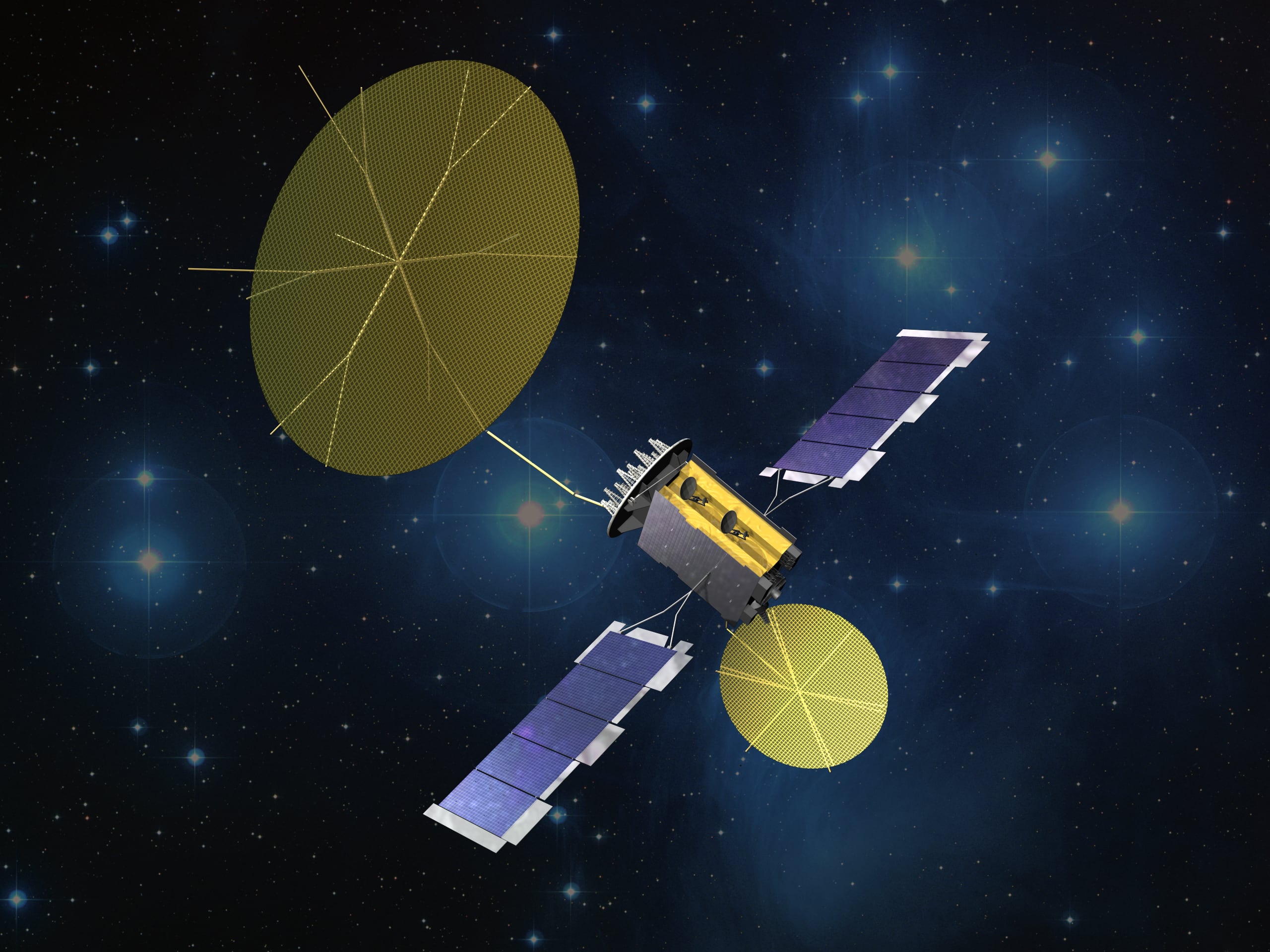COLORADO SPRINGS, Colo. — As the U.S. Space Force considers the future of its satellite communications architecture, the service wants to buy two more narrowband Mobile User Objective System satellites in the near term as part of a service life-extension effort.
The Space Force requested $46.8 million in procurement funding for the effort in its fiscal 2023 budget request. Speaking during a media briefing at Space Symposium here, the program executive officer for positioning, navigation and timing and military communications at the service’s acquisition field command, Cordell DeLaPena, told reporters the Space Force will launch a competition for the effort.
The existing MUOS constellation includes four active satellites and one on-orbit spare and was built by the U.S. Navy with Lockheed Martin as its prime contractor. With the creation of the Space Force, the program was selected to change hands to the new service – a move that was made official about a month ago with the passage of the Fiscal 2022 Omnibus Appropriations Act.
MUOS satellites operate in the 300 MHz to 3GHz range, making them less vulnerable to weather. The constellation is a replacement for the legacy Ultra High Frequency Follow-On system and was designed to provide 10 times the communications capacity of previous UHF satellites.
Prior to the program’s transfer, the Navy was on a path toward a service life extension and that effort carried forward into the Space Force. Congress appropriated $45 million in fiscal 2022 to fund studies to define the additional capability the two satellites will carry.
In a briefing with reporters last week, Director of Budget Analysis at the Center For Strategic and International Studies Todd Harrison said the proposal to buy more MUOS satellites doesn’t appear to align with the Space Force’s stated interested in building more resilient architectures.
“I do not understand why they’re going back and investing more money into this expensive, vulnerable technology,” he said. “If you want to do narrowband communications, mobile communications, go commercial. It’s so much better. The terminals are much cheaper.”
DeLaPena said the new satellites will have higher power and more enhanced communication capabilities, but the specifics are still being defined. The program is targeting a 2029 or 2030 launch date, he added, as the first MUOS satellite is approaching end of life.
Erik Daehler, Lockheed’s protected communications mission area lead, told C4ISRNET in an interview Wednesday that the company submitted a proposal for the study phase and is watching the effort closely. Along with building the first five satellites, the company is responsible for operations and sustainment of the constellation.
As the Space Force moves toward a competition for the MUOS service life extension, the Space Warfighting Analysis Center is conducting a broader look at the satellite communications architecture, which will include a plan for future narrowband, UHF satellite capabilities.
The full MUOS constellation of four active satellites has been on orbit since 2016 and it was accepted for expanded operational use in 2018. A 2021 report from the Government Accountability Office found that despite the constellation’s maturity, users still struggled to use the full suite of capabilities, largely due to delays fielding MUOS-compatible terminals.
Courtney Albon is C4ISRNET’s space and emerging technology reporter. She has covered the U.S. military since 2012, with a focus on the Air Force and Space Force. She has reported on some of the Defense Department’s most significant acquisition, budget and policy challenges.








